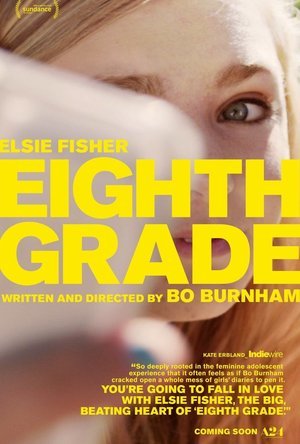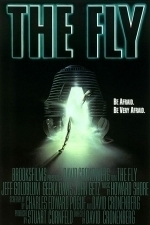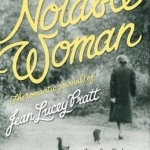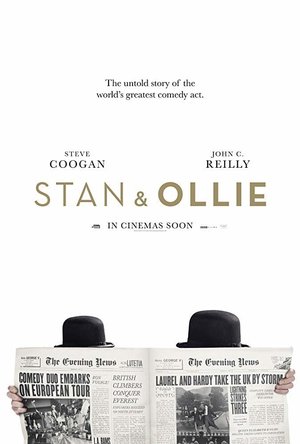Search
Lee (2222 KP) rated Eighth Grade (2018) in Movies
Apr 10, 2019
Eighth Grade had its US release back in July last year and since then, I've seen nothing but praise and high ratings for it online. Only now is it heading to UK cinemas and, for some reason, the powers that be have decided to go and release it at the same time as Avengers: Endgame later this month. Cineworld showed it earlier this week as one of their unlimited screenings, so I thought I'd give it a go before it gets lost among all the Avengers hype when it goes on general release.
Eighth Grade is the directorial debut of comedian and former YouTube star, Bo Burnham. It stars Elsie Fisher as Kayla, a young girl lacking in confidence, awkward around her fellow students at school and generally very quiet by nature. So quiet she even lands the award at school for being the quietest, nominated by fellow students in an awards ceremony held during assembly. The movie basically follows the daily struggles of Kayla and her life as a teenager. By night she endlessly scrolls through social media feeds and records her own YouTube videos. Her posts are confident, self help motivational videos about teenage issues, but rarely get more than a single like. She spends her days attempting to follow her own advice and dealing with the anxiety and heartbreak that brings. You feel genuinely awkward with her and spend the majority of the movie totally rooting for her, hoping she'll make it through this tough period of life. Even at home she struggles - mum is no longer on the scene and conversations with her dad are just strained and awkward. All of what makes this feel so natural and believable is down to Elsie Fisher, who is incredible as Kayla, a real star in the making. It all goes to show that growing up can be so hard, girls can be real bitches and boys can be absolute dicks!
I guess your overall enjoyment of the movie kind of depends on whether you can relate to, or appreciate, any of the experiences or feelings that Kayla has. Being a socially awkward father of two daughters, I guess I was hoping to find a lot more to relate to and enjoy than I actually did. To be fair, there are plenty of perfectly observed, wonderfully acted and genuinely beautiful moments throughout, but the movie plays too much like a documentary and that worked against it for me. Far too many moments, particularly around the middle section, when the movie really dragged. And at only 93 minutes long, I shouldn't really be checking my watch and hoping for it to end in the way that I did.
Probably only about 15 or so people attended the large screening of this at my local Cineworld, and around half a dozen of those got up and left during the movie. I wondered if this was indicative of the other screenings around the country but, judging by the reaction online afterwards, approximately 90% of Cineworld Unlimited members seem to have really loved it, with many declaring it their favourite movie so far this year! So I guess this is one of those movies that's really going to divide people. Worth checking out though, and hopefully you'll enjoy it a lot more than I did.
Eighth Grade is the directorial debut of comedian and former YouTube star, Bo Burnham. It stars Elsie Fisher as Kayla, a young girl lacking in confidence, awkward around her fellow students at school and generally very quiet by nature. So quiet she even lands the award at school for being the quietest, nominated by fellow students in an awards ceremony held during assembly. The movie basically follows the daily struggles of Kayla and her life as a teenager. By night she endlessly scrolls through social media feeds and records her own YouTube videos. Her posts are confident, self help motivational videos about teenage issues, but rarely get more than a single like. She spends her days attempting to follow her own advice and dealing with the anxiety and heartbreak that brings. You feel genuinely awkward with her and spend the majority of the movie totally rooting for her, hoping she'll make it through this tough period of life. Even at home she struggles - mum is no longer on the scene and conversations with her dad are just strained and awkward. All of what makes this feel so natural and believable is down to Elsie Fisher, who is incredible as Kayla, a real star in the making. It all goes to show that growing up can be so hard, girls can be real bitches and boys can be absolute dicks!
I guess your overall enjoyment of the movie kind of depends on whether you can relate to, or appreciate, any of the experiences or feelings that Kayla has. Being a socially awkward father of two daughters, I guess I was hoping to find a lot more to relate to and enjoy than I actually did. To be fair, there are plenty of perfectly observed, wonderfully acted and genuinely beautiful moments throughout, but the movie plays too much like a documentary and that worked against it for me. Far too many moments, particularly around the middle section, when the movie really dragged. And at only 93 minutes long, I shouldn't really be checking my watch and hoping for it to end in the way that I did.
Probably only about 15 or so people attended the large screening of this at my local Cineworld, and around half a dozen of those got up and left during the movie. I wondered if this was indicative of the other screenings around the country but, judging by the reaction online afterwards, approximately 90% of Cineworld Unlimited members seem to have really loved it, with many declaring it their favourite movie so far this year! So I guess this is one of those movies that's really going to divide people. Worth checking out though, and hopefully you'll enjoy it a lot more than I did.
Gareth von Kallenbach (980 KP) rated Pirates of the Caribbean: At Worlds End (2007) in Movies
Aug 14, 2019
Captain Jack Sparrow (Johnny Depp) returns in “Pirates of the Caribbean: At Worlds End”, the third film in the series which has set box office records the world over. Picking up shortly after the events of the previous film, “Dead Man’s Chest”, it’s a new world for pirates and those who associate with pirates. Once the hunters, they’ve become the hunted, rounded up by The East India Trading Company, headed by Lord Cutler Beckett (Tom Hollander). Now under Beckett’s command, The Flying Dutchman, and its miserable, unforgiving captain, Davy Jones (Bill Nighy), sails the seven seas hunting pirate ships and giving no quarter.
Will Turner (Orlando Bloom), Elizabeth Swann (Keira Knightley) and Captain Barbossa (Geoffrey Rush) journey to exotic Singapore and confront Chinese pirate Captain Sao Feng (Chow Yun-Fat) to gain charts, and a ship, that will take them off to world’s end, to rescue Jack from his cursed fate in Davy Jone’s Locker.
They need to gather the Nine Lords of the Brethren Court, their only hope to defeat Beckett, the Flying Dutchman, and his Armada. Sao Feng is one of the nine lords as is Captain Jack Sparrow (Johnny Depp). Their clandestine meeting does not go unnoticed, with the East India Trading Company dispatching troops to interfere, and soon a battle royale erupts in one of the films better moments, which sadly were few and far between.
British troops and treacherous waters dispensed with, Elizabeth, Captain Barbosa, and Will Turner (Orlando Bloom), are reunited with Jack, which sets into motion a very long, and at times confusing series of events. Jack is trying to avoid his debt to the squid faced Davy Jones, while Will is hoping to free his father from the Flying Dutchman as well, and at the same time restore his damaged relationship with Elizabeth.
While this covers the main three characters, the agenda for the others in the film are much more murky, especially that of Barbossa and other members of the Brethren Court who join together and seem content to risk life and limb without much in the way of compensation. There is a tacked on subplot about the Pieces of Eight that are needed to free a magical entity who may be of help in their battle with the deadly Jones and his otherworldly crew, but sadly most of the film’s nearly three hour running times seems either unnecessary and/or confusing as it works its way towards the final climax.
When the film does shift back into action mode which thankfully comes in the final 30 minutes or so of the film, with great special effects, the attractive and nimble cast really get a chance to shine. It is easily the most enjoyable and invigorating action sequence in all three of the films, and is almost worth the wait it took to get there. Almost. The film suffers mightily from the convoluted plot, dragging painfully on for long stretches of time, and only seems to come to life when Depp is on the screen. Sadly that is not nearly enough to save the film, weighed down as it is by the issues I’ve already detailed.
Although visually spectacular, I had high hopes for this film, especially after the great, but somewhat disturbing, opening sequence. Any momentum gained from that was quickly lost and the film soon became a bloated extravaganza of style over substance that was badly in need of having 45-60 minutes trimmed from its running time.
Will Turner (Orlando Bloom), Elizabeth Swann (Keira Knightley) and Captain Barbossa (Geoffrey Rush) journey to exotic Singapore and confront Chinese pirate Captain Sao Feng (Chow Yun-Fat) to gain charts, and a ship, that will take them off to world’s end, to rescue Jack from his cursed fate in Davy Jone’s Locker.
They need to gather the Nine Lords of the Brethren Court, their only hope to defeat Beckett, the Flying Dutchman, and his Armada. Sao Feng is one of the nine lords as is Captain Jack Sparrow (Johnny Depp). Their clandestine meeting does not go unnoticed, with the East India Trading Company dispatching troops to interfere, and soon a battle royale erupts in one of the films better moments, which sadly were few and far between.
British troops and treacherous waters dispensed with, Elizabeth, Captain Barbosa, and Will Turner (Orlando Bloom), are reunited with Jack, which sets into motion a very long, and at times confusing series of events. Jack is trying to avoid his debt to the squid faced Davy Jones, while Will is hoping to free his father from the Flying Dutchman as well, and at the same time restore his damaged relationship with Elizabeth.
While this covers the main three characters, the agenda for the others in the film are much more murky, especially that of Barbossa and other members of the Brethren Court who join together and seem content to risk life and limb without much in the way of compensation. There is a tacked on subplot about the Pieces of Eight that are needed to free a magical entity who may be of help in their battle with the deadly Jones and his otherworldly crew, but sadly most of the film’s nearly three hour running times seems either unnecessary and/or confusing as it works its way towards the final climax.
When the film does shift back into action mode which thankfully comes in the final 30 minutes or so of the film, with great special effects, the attractive and nimble cast really get a chance to shine. It is easily the most enjoyable and invigorating action sequence in all three of the films, and is almost worth the wait it took to get there. Almost. The film suffers mightily from the convoluted plot, dragging painfully on for long stretches of time, and only seems to come to life when Depp is on the screen. Sadly that is not nearly enough to save the film, weighed down as it is by the issues I’ve already detailed.
Although visually spectacular, I had high hopes for this film, especially after the great, but somewhat disturbing, opening sequence. Any momentum gained from that was quickly lost and the film soon became a bloated extravaganza of style over substance that was badly in need of having 45-60 minutes trimmed from its running time.
Andy K (10823 KP) rated The Fly (1986) in Movies
Oct 3, 2019
Be Afraid...Be Very Afraid
Seth Brundle is his own version of Dr Frankenstein. Instead of reanimating dead issue, his desire is to teleport flesh from one "telepod" to another.
After a chance meeting at a social magazine function, Veronica "Ronnie" Quaife meets the eccentric genius Brundle. She agrees to come back to his spacious, warehouse studio loft to see what he has been working on. He tells her about his masterpiece that will change the concept of travel throughout the world. After a short demonstration, Ronnie is not sure what to believe.
The next day, she explains what happened to her editor and scummy, sexist former boyfriend who suggests Brundle is just a con man. Eventually, Ronnie takes the offer to be Brundle's exclusive recorder of the evolution of his creation which has still one major flaw, it can only teleport inanimate objects. When tried on something living, the computer doesn't understand "the flesh" turn disembowels its subjects.Ronnie and Brundle begin a torrid affair amidst more work on the pods ultimately concluding with the successful teleportation of a baboon.
After Ronnie's boss and former lover threatens to publish her story early, Brundle gets drunk and decides it is time for a human trial of his newly perfected equipment. In his haste, he does not notice an insect guest present within his pod with him. Although successful, Brundle is not aware of his transformation yet to come.
His evolution from man to man/insect begins slowly, but continues relentlessly though Brundle does not know the cause. Once he looks through his records and discovers the genesis of his misfortune, he may be too late to stop it.
The Fly has to be director David Cronenberg's biggest financial hit grossing north of $40 million in 1986. Adjusted for inflation and considering the subject matter, genre and R rating, that would have to be much more if released today. It's hard to say the film would be Cronenberg's highest critical success, although most of his early films are now considered cult classics since they had a hard time finding mainstream audiences due to their "body horror" often gruesome visuals and offbeat subject matter.
Although most would classify as horror due to the shocking visuals within the last 30 minutes of the film, I have always felt it was more of a thriller. Once Bundle is infected, he has to use his sharp, but now deteriorating wits to figure a solution to his problem before it is too late. Every subsequent Ronnie visit to Brundle's loft finds unexpected results which keep the viewer on edge and wondering what horrors they will view next.
The make up effects in the film rivaled any of the top work ever at that time and garnered effect artist Chris Walas an Academy Award in 1986. By today's standards of CGI and film perfection, some elements could look a bit dated to modern audiences, but I believe still hold up to present day scrutiny.
The film score by frequent Cronenberg collaborator Howard Shore is haunting, bleak somber, and excellent.
Too often mesmerizing acting performances in horror/thriller movies get overlooked for the Oscars (except if you are Anthony Hopkins) which is a shame here. Jeff Goldblum undergoes not only a physical transformation, but his mannerisms, ticks and speech all go from human to insect and he deserves a lot of credit for what he did to bring "Brundlefly" to life.
After a chance meeting at a social magazine function, Veronica "Ronnie" Quaife meets the eccentric genius Brundle. She agrees to come back to his spacious, warehouse studio loft to see what he has been working on. He tells her about his masterpiece that will change the concept of travel throughout the world. After a short demonstration, Ronnie is not sure what to believe.
The next day, she explains what happened to her editor and scummy, sexist former boyfriend who suggests Brundle is just a con man. Eventually, Ronnie takes the offer to be Brundle's exclusive recorder of the evolution of his creation which has still one major flaw, it can only teleport inanimate objects. When tried on something living, the computer doesn't understand "the flesh" turn disembowels its subjects.Ronnie and Brundle begin a torrid affair amidst more work on the pods ultimately concluding with the successful teleportation of a baboon.
After Ronnie's boss and former lover threatens to publish her story early, Brundle gets drunk and decides it is time for a human trial of his newly perfected equipment. In his haste, he does not notice an insect guest present within his pod with him. Although successful, Brundle is not aware of his transformation yet to come.
His evolution from man to man/insect begins slowly, but continues relentlessly though Brundle does not know the cause. Once he looks through his records and discovers the genesis of his misfortune, he may be too late to stop it.
The Fly has to be director David Cronenberg's biggest financial hit grossing north of $40 million in 1986. Adjusted for inflation and considering the subject matter, genre and R rating, that would have to be much more if released today. It's hard to say the film would be Cronenberg's highest critical success, although most of his early films are now considered cult classics since they had a hard time finding mainstream audiences due to their "body horror" often gruesome visuals and offbeat subject matter.
Although most would classify as horror due to the shocking visuals within the last 30 minutes of the film, I have always felt it was more of a thriller. Once Bundle is infected, he has to use his sharp, but now deteriorating wits to figure a solution to his problem before it is too late. Every subsequent Ronnie visit to Brundle's loft finds unexpected results which keep the viewer on edge and wondering what horrors they will view next.
The make up effects in the film rivaled any of the top work ever at that time and garnered effect artist Chris Walas an Academy Award in 1986. By today's standards of CGI and film perfection, some elements could look a bit dated to modern audiences, but I believe still hold up to present day scrutiny.
The film score by frequent Cronenberg collaborator Howard Shore is haunting, bleak somber, and excellent.
Too often mesmerizing acting performances in horror/thriller movies get overlooked for the Oscars (except if you are Anthony Hopkins) which is a shame here. Jeff Goldblum undergoes not only a physical transformation, but his mannerisms, ticks and speech all go from human to insect and he deserves a lot of credit for what he did to bring "Brundlefly" to life.

Lookout: Security and Identity Theft Protection
Utilities and Productivity
App
We’re excited to introduce Safe Wi-Fi and System Advisor, two brand new security features to keep...

GPS Tracker 365 Manager - Locator for Kids, People & Vehicle. Real Time Tracking
Navigation and Utilities
App
【Video Demo】 https://www.youtube.com/watch?v=SbMZuD1dqsU 【theiphoneappreview.com...
Hazel (1853 KP) rated A Notable Woman: The Romantic Journals of Jean Lucey Pratt in Books
May 25, 2017
Looooong
I received this book for free through Goodreads First Reads.
Whilst researching a previous book, Simon Garfield came across the diaries of Jean Lucey Pratt amongst journals collected during the Second World War for Mass Observation. Intrigued by her observations and character, Garfield became determined to learn more about her. After eventually receiving permission from Jean’s niece, he was able to read all forty-five of her diaries, edit them, and produce this huge manuscript for publication: A Notable Woman.
Jean began writing her journals in the April of 1925 at the young age of fifteen. Although she did not write everyday, she continued putting down her thoughts and experiences up until her death in 1986. Jean Lucey Pratt was not a celebrity, although she did write an, unfortunately, unsuccessful book; nor did she achieve anything spectacular during her lifetime. What makes her diaries worth publishing is the fact that she was “ordinary,” a woman who wrote not to impress other people, but to honestly express her emotions and opinions.
For the majority of her life Jean lived on her own in Burnham Beeches, Buckinghamshire, where she yearned for a husband. Her dreams of finding the perfect man yet only attracting a handful of lovers is both amusing and saddening. The most interesting part of her written records, however, has got to be the experiences of war. Unlike other diarist such as Anne Frank, who feared for their lives, or those that experienced the fighting up front, Jean provides the perspective of the average British citizen. She comments on the rationing, the blackout curtains as well as the political propaganda, providing her own opinions, which often changed as the war progressed. Jean amuses the reader by revealing she often slept through an air raid, only waking up at the sound of the All Clear.
The war ends midway through the book, thus delivering accounts of the latter half of her life, from career to ill health, incorporating in family events and, of course, her enormous horde of cats. Although a rather introverted, lonely individual, Jean’s relationship and love for her brother is often heartwarming. Separated by oceans and only seeing him every so many years, it is clear that the siblings are strongly supportive of each other. Jean often refers to her brother as Pooh (as in Winnie the Pooh), to which he responds by calling her Piglet.
Initially Jean did not intend to let anyone read her diaries but later began to imagine how other people would react to what she had written. She toyed with the idea of posthumous publication, but presumed only family and friends would read them – how wrong she was! Regardless of whether her diaries were to be viewed by outsiders or not, Jean usually referred to people by their initials. Whether she did this for a particular reason or merely to save time when writing remains debatable, however it does cause a bit of confusion when reading. Helpfully the editor, Garfield, has provided a character list that can be referred back to as needed.
Simon Garfield has done a magnificent job of compiling the diary entries together to produce an interesting, moving and occasionally amusing story about life during the 1900s. He has painstakingly sorted through handwritten entries, deciding what bits to omit and conducting further research in order to explain in footnotes the sections or references that would not make sense if left alone. Garfield has made the majority of Jean’s journals flow like a novel, only becoming erratic towards the end of her life when she would only write once every few months.
A Notable Woman gives a fantastic insight into the lives of ordinary people during an era of hardship and change. Readers are more likely to read an accurate description of the war and subsequent years in this book than in any emotionally detached textbook or biased account. Without a doubt this book is worth a read, although do not expect to be able to rush through it as some may do with a work of fiction. Garfield if highly praised for his efforts, and one hopes that Jean would be proud to finally have a writing success.
Whilst researching a previous book, Simon Garfield came across the diaries of Jean Lucey Pratt amongst journals collected during the Second World War for Mass Observation. Intrigued by her observations and character, Garfield became determined to learn more about her. After eventually receiving permission from Jean’s niece, he was able to read all forty-five of her diaries, edit them, and produce this huge manuscript for publication: A Notable Woman.
Jean began writing her journals in the April of 1925 at the young age of fifteen. Although she did not write everyday, she continued putting down her thoughts and experiences up until her death in 1986. Jean Lucey Pratt was not a celebrity, although she did write an, unfortunately, unsuccessful book; nor did she achieve anything spectacular during her lifetime. What makes her diaries worth publishing is the fact that she was “ordinary,” a woman who wrote not to impress other people, but to honestly express her emotions and opinions.
For the majority of her life Jean lived on her own in Burnham Beeches, Buckinghamshire, where she yearned for a husband. Her dreams of finding the perfect man yet only attracting a handful of lovers is both amusing and saddening. The most interesting part of her written records, however, has got to be the experiences of war. Unlike other diarist such as Anne Frank, who feared for their lives, or those that experienced the fighting up front, Jean provides the perspective of the average British citizen. She comments on the rationing, the blackout curtains as well as the political propaganda, providing her own opinions, which often changed as the war progressed. Jean amuses the reader by revealing she often slept through an air raid, only waking up at the sound of the All Clear.
The war ends midway through the book, thus delivering accounts of the latter half of her life, from career to ill health, incorporating in family events and, of course, her enormous horde of cats. Although a rather introverted, lonely individual, Jean’s relationship and love for her brother is often heartwarming. Separated by oceans and only seeing him every so many years, it is clear that the siblings are strongly supportive of each other. Jean often refers to her brother as Pooh (as in Winnie the Pooh), to which he responds by calling her Piglet.
Initially Jean did not intend to let anyone read her diaries but later began to imagine how other people would react to what she had written. She toyed with the idea of posthumous publication, but presumed only family and friends would read them – how wrong she was! Regardless of whether her diaries were to be viewed by outsiders or not, Jean usually referred to people by their initials. Whether she did this for a particular reason or merely to save time when writing remains debatable, however it does cause a bit of confusion when reading. Helpfully the editor, Garfield, has provided a character list that can be referred back to as needed.
Simon Garfield has done a magnificent job of compiling the diary entries together to produce an interesting, moving and occasionally amusing story about life during the 1900s. He has painstakingly sorted through handwritten entries, deciding what bits to omit and conducting further research in order to explain in footnotes the sections or references that would not make sense if left alone. Garfield has made the majority of Jean’s journals flow like a novel, only becoming erratic towards the end of her life when she would only write once every few months.
A Notable Woman gives a fantastic insight into the lives of ordinary people during an era of hardship and change. Readers are more likely to read an accurate description of the war and subsequent years in this book than in any emotionally detached textbook or biased account. Without a doubt this book is worth a read, although do not expect to be able to rush through it as some may do with a work of fiction. Garfield if highly praised for his efforts, and one hopes that Jean would be proud to finally have a writing success.
Hazel (1853 KP) rated A Notable Woman: The Romantic Journals of Jean Lucey Pratt in Books
Dec 7, 2018
<i>I received this book for free through Goodreads First Reads.</i>
Whilst researching a previous book, Simon Garfield came across the diaries of Jean Lucey Pratt amongst journals collected during the Second World War for Mass Observation. Intrigued by her observations and character, Garfield became determined to learn more about her. After eventually receiving permission from Jean’s niece, he was able to read all forty-five of her diaries, edit them, and produce this huge manuscript for publication: <i>A Notable Woman</i>.
Jean began writing her journals in the April of 1925 at the young age of fifteen. Although she did not write everyday, she continued putting down her thoughts and experiences up until her death in 1986. Jean Lucey Pratt was not a celebrity, although she did write an, unfortunately, unsuccessful book; nor did she achieve anything spectacular during her lifetime. What makes her diaries worth publishing is the fact that she was “ordinary,” a woman who wrote not to impress other people, but to honestly express her emotions and opinions.
For the majority of her life Jean lived on her own in Burnham Beeches, Buckinghamshire, where she yearned for a husband. Her dreams of finding the perfect man yet only attracting a handful of lovers is both amusing and saddening. The most interesting part of her written records, however, has got to be the experiences of war. Unlike other diarist such as Anne Frank, who feared for their lives, or those that experienced the fighting up front, Jean provides the perspective of the average British citizen. She comments on the rationing, the blackout curtains as well as the political propaganda, providing her own opinions, which often changed as the war progressed. Jean amuses the reader by revealing she often slept through an air raid, only waking up at the sound of the All Clear.
The war ends midway through the book, thus delivering accounts of the latter half of her life, from career to ill health, incorporating in family events and, of course, her enormous horde of cats. Although a rather introverted, lonely individual, Jean’s relationship and love for her brother is often heartwarming. Separated by oceans and only seeing him every so many years, it is clear that the siblings are strongly supportive of each other. Jean often refers to her brother as Pooh (as in <i>Winnie the Pooh</i>), to which he responds by calling her Piglet.
Initially Jean did not intend to let anyone read her diaries but later began to imagine how other people would react to what she had written. She toyed with the idea of posthumous publication, but presumed only family and friends would read them – how wrong she was! Regardless of whether her diaries were to be viewed by outsiders or not, Jean usually referred to people by their initials. Whether she did this for a particular reason or merely to save time when writing remains debatable, however it does cause a bit of confusion when reading. Helpfully the editor, Garfield, has provided a character list that can be referred back to as needed.
Simon Garfield has done a magnificent job of compiling the diary entries together to produce an interesting, moving and occasionally amusing story about life during the 1900s. He has painstakingly sorted through handwritten entries, deciding what bits to omit and conducting further research in order to explain in footnotes the sections or references that would not make sense if left alone. Garfield has made the majority of Jean’s journals flow like a novel, only becoming erratic towards the end of her life when she would only write once every few months.
<i>A Notable Woman</i> gives a fantastic insight into the lives of ordinary people during an era of hardship and change. Readers are more likely to read an accurate description of the war and subsequent years in this book than in any emotionally detached textbook or biased account. Without a doubt this book is worth a read, although do not expect to be able to rush through it as some may do with a work of fiction. Garfield if highly praised for his efforts, and one hopes that Jean would be proud to finally have a writing success.
Whilst researching a previous book, Simon Garfield came across the diaries of Jean Lucey Pratt amongst journals collected during the Second World War for Mass Observation. Intrigued by her observations and character, Garfield became determined to learn more about her. After eventually receiving permission from Jean’s niece, he was able to read all forty-five of her diaries, edit them, and produce this huge manuscript for publication: <i>A Notable Woman</i>.
Jean began writing her journals in the April of 1925 at the young age of fifteen. Although she did not write everyday, she continued putting down her thoughts and experiences up until her death in 1986. Jean Lucey Pratt was not a celebrity, although she did write an, unfortunately, unsuccessful book; nor did she achieve anything spectacular during her lifetime. What makes her diaries worth publishing is the fact that she was “ordinary,” a woman who wrote not to impress other people, but to honestly express her emotions and opinions.
For the majority of her life Jean lived on her own in Burnham Beeches, Buckinghamshire, where she yearned for a husband. Her dreams of finding the perfect man yet only attracting a handful of lovers is both amusing and saddening. The most interesting part of her written records, however, has got to be the experiences of war. Unlike other diarist such as Anne Frank, who feared for their lives, or those that experienced the fighting up front, Jean provides the perspective of the average British citizen. She comments on the rationing, the blackout curtains as well as the political propaganda, providing her own opinions, which often changed as the war progressed. Jean amuses the reader by revealing she often slept through an air raid, only waking up at the sound of the All Clear.
The war ends midway through the book, thus delivering accounts of the latter half of her life, from career to ill health, incorporating in family events and, of course, her enormous horde of cats. Although a rather introverted, lonely individual, Jean’s relationship and love for her brother is often heartwarming. Separated by oceans and only seeing him every so many years, it is clear that the siblings are strongly supportive of each other. Jean often refers to her brother as Pooh (as in <i>Winnie the Pooh</i>), to which he responds by calling her Piglet.
Initially Jean did not intend to let anyone read her diaries but later began to imagine how other people would react to what she had written. She toyed with the idea of posthumous publication, but presumed only family and friends would read them – how wrong she was! Regardless of whether her diaries were to be viewed by outsiders or not, Jean usually referred to people by their initials. Whether she did this for a particular reason or merely to save time when writing remains debatable, however it does cause a bit of confusion when reading. Helpfully the editor, Garfield, has provided a character list that can be referred back to as needed.
Simon Garfield has done a magnificent job of compiling the diary entries together to produce an interesting, moving and occasionally amusing story about life during the 1900s. He has painstakingly sorted through handwritten entries, deciding what bits to omit and conducting further research in order to explain in footnotes the sections or references that would not make sense if left alone. Garfield has made the majority of Jean’s journals flow like a novel, only becoming erratic towards the end of her life when she would only write once every few months.
<i>A Notable Woman</i> gives a fantastic insight into the lives of ordinary people during an era of hardship and change. Readers are more likely to read an accurate description of the war and subsequent years in this book than in any emotionally detached textbook or biased account. Without a doubt this book is worth a read, although do not expect to be able to rush through it as some may do with a work of fiction. Garfield if highly praised for his efforts, and one hopes that Jean would be proud to finally have a writing success.
Bob Mann (459 KP) rated Stan & Ollie (2018) in Movies
Sep 28, 2021
When the laughter has to end.
The problem with any comedy double act is that if illness or death get in the way (think Dustin Gee and Les Dennis; or Morecambe and Wise) the wheels can come off for the other partner. “Stan and Ollie” tells the story of the comic duo starting in 1937 when they reached their peak of global popularity, albeit when Laurel was hardly on speaking terms with their long-term producer Hal Roach (Danny Huston).
As you might guess from this, the emotional direction for the film is downwards, but not necessarily in a totally depressing way. The film depicts the duo’s tour of Laurel’s native country (he was born in Lancashire) and this has its ups as well as its downs.
Not knowing their life story, this is one where when the trailer came on I shut my eyes and plugged my ears so as to avoid spoilers: as such I will say nothing further on the details of the plot.
My wife and I were reminiscing after seeing this flick about how our parents used to crack up over the film antics of Laurel and Hardy. And they were, in their own slapstick way, very funny indeed. The film manages to recreate (impecably) some of their more famous routines and parodies others: their travel trunk gallops to the bottom of the station steps, mimicking the famous scenes with a piano from 1932’s “The Music Box”. “Do we really need that trunk” Hardy deadpans to Laurel.
The turns
There are four star turns at the heart of the film and they are John C. Reilly as Ollie; Steve Coogan as Stan; Shirley Henderson (forever to be referenced as “Moaning Myrtle”) as Ollie’s wife Lucille and Nina Arianda (so memorable as the ‘pointer outer’ in the ‘Emperor’s New Clothes’ segment of “Florence Foster Jenkins“) as Stan’s latest wife Ida.
Coogan and Reilly do an outstanding job of impersonating the comic duo. Both are simply brilliant, playing up to their public personas when visible but subtly delivering similar traits in private. Of the two, John C. Reilly’s performance is the most memorable: he IS Oliver Hardy. Not taking too much away from the other performance, but there are a few times when Coogan poked through the illusion (like a Partridge sticking its head out from a Pear Tree you might say).
Henderson and Arianda also add tremendous heart to the drama, and Arianda’s Ida in particular is hilarious. Also delivering a fabulous supporting role is Rufus Jones as the famous impressario Bernard Delfont: all smarm and Machiavellian chicanery that adds a different shape of comedy to the film.
Another Fine Mess?
Actually, no: it’s one of those pleasant and untaxing cinema experiences that older audiences in particular will really enjoy. However, the film’s far from perfect in my view: the flash-forwards/flash-backs I felt made the story bitty and disjointed; and ultimately the life story of the duo doesn’t have a huge depth of drama in it to amaze or excite, the way that 2004’s “Beyond the Sea” (the biopic of Bobby Darin) did for example. But the film never gets boring or disappoints.
I’d like to say that the script by Jeff Pope (“Philomena“) is historically accurate, but a look at the wikipedia entries for the pair show that it was far from that. Yes, the tours of the UK and Europe did happen, but over multiple years and the actual events in their lives are telescoped into a single trip for dramatic purposes. But I think the essence of the pair comes across nicely. Laurel’s wikipedia entry records a nice death-bed scene that sums up the guy:
“Minutes before his death, he told his nurse that he would not mind going skiing, and she replied that she was not aware that he was a skier. “I’m not,” said Laurel, “I’d rather be doing that than this!” A few minutes later, the nurse looked in on him again and found that he had died quietly in his armchair.”
“Stan and Ollie” has a few preview screenings before the New Year, but goes on UK general release on January 11th. Recommended.
As you might guess from this, the emotional direction for the film is downwards, but not necessarily in a totally depressing way. The film depicts the duo’s tour of Laurel’s native country (he was born in Lancashire) and this has its ups as well as its downs.
Not knowing their life story, this is one where when the trailer came on I shut my eyes and plugged my ears so as to avoid spoilers: as such I will say nothing further on the details of the plot.
My wife and I were reminiscing after seeing this flick about how our parents used to crack up over the film antics of Laurel and Hardy. And they were, in their own slapstick way, very funny indeed. The film manages to recreate (impecably) some of their more famous routines and parodies others: their travel trunk gallops to the bottom of the station steps, mimicking the famous scenes with a piano from 1932’s “The Music Box”. “Do we really need that trunk” Hardy deadpans to Laurel.
The turns
There are four star turns at the heart of the film and they are John C. Reilly as Ollie; Steve Coogan as Stan; Shirley Henderson (forever to be referenced as “Moaning Myrtle”) as Ollie’s wife Lucille and Nina Arianda (so memorable as the ‘pointer outer’ in the ‘Emperor’s New Clothes’ segment of “Florence Foster Jenkins“) as Stan’s latest wife Ida.
Coogan and Reilly do an outstanding job of impersonating the comic duo. Both are simply brilliant, playing up to their public personas when visible but subtly delivering similar traits in private. Of the two, John C. Reilly’s performance is the most memorable: he IS Oliver Hardy. Not taking too much away from the other performance, but there are a few times when Coogan poked through the illusion (like a Partridge sticking its head out from a Pear Tree you might say).
Henderson and Arianda also add tremendous heart to the drama, and Arianda’s Ida in particular is hilarious. Also delivering a fabulous supporting role is Rufus Jones as the famous impressario Bernard Delfont: all smarm and Machiavellian chicanery that adds a different shape of comedy to the film.
Another Fine Mess?
Actually, no: it’s one of those pleasant and untaxing cinema experiences that older audiences in particular will really enjoy. However, the film’s far from perfect in my view: the flash-forwards/flash-backs I felt made the story bitty and disjointed; and ultimately the life story of the duo doesn’t have a huge depth of drama in it to amaze or excite, the way that 2004’s “Beyond the Sea” (the biopic of Bobby Darin) did for example. But the film never gets boring or disappoints.
I’d like to say that the script by Jeff Pope (“Philomena“) is historically accurate, but a look at the wikipedia entries for the pair show that it was far from that. Yes, the tours of the UK and Europe did happen, but over multiple years and the actual events in their lives are telescoped into a single trip for dramatic purposes. But I think the essence of the pair comes across nicely. Laurel’s wikipedia entry records a nice death-bed scene that sums up the guy:
“Minutes before his death, he told his nurse that he would not mind going skiing, and she replied that she was not aware that he was a skier. “I’m not,” said Laurel, “I’d rather be doing that than this!” A few minutes later, the nurse looked in on him again and found that he had died quietly in his armchair.”
“Stan and Ollie” has a few preview screenings before the New Year, but goes on UK general release on January 11th. Recommended.






